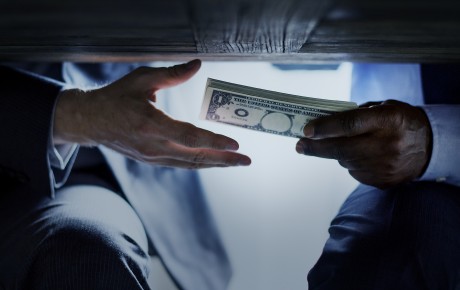
The end of class actions?
The Supreme Court’s decision in Erica P John Fund Inc. v. Halliburton Co. could fundamentally change the nature of shareholder litigation. Tort reformers, who blame class-action lawyers for effectively levying a multi-billion-dollar legal tax on US businesses, hope the court will overturn the “fraud on the market theory”, which underpins current civil securities law. But a legal limbo is unlikely to bring a drop in claims against company executives. Instead, it could have destabilising and uncertain consequences on directors’ and officers’ (D&O) insurance.
By deciding to do away with the fraud on the market theory, the court could make it much harder for opportunistic plaintiffs’ lawyers to put together class actions involving disgruntled shareholders to sue corporations for millions of dollars. But although the Supreme Court has expressed its desire to hear the case, it is far from certain that it will reverse the stance it took nearly two decades ago.
If overturning the fraud on the market theory resulted in class actions being driven by major pension funds then the settlements could, conceivably, be much higher than they are now
The fraud on the market theory has strong advocates, including the US Justice Department (DOJ). In a legal brief for Supreme Court justices, the DOJ says the theory is a cornerstone of federal securities law. It also argues: “meritorious private securities-fraud actions are an essential supplement to criminal prosecutions and civil enforcement actions brought by the Department of Justice and the SEC.”
Congress, the DOJ states, has had plenty of opportunity in the past 20 years to overturn the theory when making new securities laws, but has decided not to do so – implying that, if the country’s elected lawmakers have not tampered with it, neither should its unelected judges.
Beware a new false dawn in D&O
If the Supreme Court overturned the fraud on the market theory, some hope that could lead to the demise of shareholder class-action lawsuits. But they are being over optimistic, says Chris Warrior, Head of Management Liability at Hiscox.
It has been argued that if the court imposed a much higher hurdle on class-action members, it would stop many frivolous lawsuits against companies from being filed.
But, defence and D&O insurers’ lawyers are already pretty good at eliminating these, Warrior says. “The dismissal rate for weak lawsuits is already over 50%, and, by some measures, is considerably higher than that. So, for insurers, the consequences of this potential side effect of overturning the fraud on the market theory are pretty small.”
Imposing a higher burden of proof on plaintiffs could, in fact, come to haunt companies and their insurers. “If there is a group that is capable of proving a direct causal link between a company’s misrepresentation and their own financial loss it would probably be large professional investors,” says Warrior.
“If overturning the fraud on the market theory resulted in class actions being driven by major pension funds then the settlements could, conceivably, be much higher than they are now,” says Warrior. “That could result in higher – not lower – D&O settlements than under the previous system.”
For lessons on the unintended consequences of tightening up securities regulation, insurers need only look back to the mid-1990s, suggests Warrior. Those keen to curb the power of plaintiffs' attorneys hailed the Private Securities Litigation Reform Act (PSLRA) in 1995 as being the law that would cut the torrent of class actions to a trickle.
Indeed, only 98 private-securities lawsuits were launched in 1996 – nearly half the number in the previous year. That led some legal commentators and insurers to predict what turned out to be a false dawn of a less litigious culture in corporate America. Underwriters responded by cutting rates and expanding coverage, in anticipation of what they thought would be a permanent decline in shareholder lawsuits. They genuinely feared that corporations would no longer bother to buy D&O cover.
We shouldn’t think that litigation would stop, even if the Halliburton judgment was very favourable for corporate America. D&O would not be rendered unnecessary
But, instead, plaintiffs’ attorneys were digesting the implications of the new law. They realised that although the PSLRA raised the legal hurdle for bringing a lawsuit considerably, the extra groundwork required to bring cases would mean that the courts were likely to agree to hear more of them. That, in turn, could result in higher settlements from companies and their insurers.
The number of shareholder suits jumped to 169 in 1997, and rose to 232 in 1998 – more than in any of the seven years before the PSLRA was made law. The plaintiffs’ lawyers’ new, more rigorous approach to bringing lawsuits, which resulted directly from the PSLRA, combined with the bursting of the dotcom bubble, resulted in a “catastrophic period for the D&O insurance industry”, said Warrior.
New suits for smart lawyers
Plaintiffs’ lawyers have found new methods of litigation, as the courts have already chipped away at their ability to bring class actions. For example, there has been a huge increase in derivative actions – brought on behalf of the company itself rather than shareholders – and M&A claims (see box), as well as “say on pay” lawsuits on executive remuneration.
“We shouldn’t think that litigation would stop, even if the Halliburton judgment was very favourable for corporate America. D&O would not be rendered unnecessary,” says Warrior.
If their response to the PSLRA is anything to go by, enterprising plaintiffs’ attorneys may already be searching for new ways to bring lawsuits, in case the Halliburton judgment goes against their interests. If they are successful in finding another new legal seam to mine, and the Supreme Court refuses to overturn the fraud on the market theory – meaning the current steady flow of class action lawsuits continues as before – then D&O insurers may be faced with more, rather than fewer, lawsuits.
“That would be the worse-case scenario. Rather than the trench warfare we’re currently waging, insurers could be fighting on several fronts, of which one is completely unfamiliar territory to us,” says Warrior.
The Halliburton case in brief
What is the “fraud on the market theory” and why does it matter?
The Halliburton case, which began oral arguments on March 5, could make it significantly harder for potential litigants to join in a class action alleging misbehaviour by a company’s senior executives.
To become part of a class action, plaintiffs must show a causal link between a defendant’s misrepresentation and their own injury. The link, laid down by the Supreme Court in a 1988 case, Basic Inc. v. Levinson, was through a company’s share price. Justices decided that a company’s share price reflects all the publicly known information about it, including any misrepresentations it has made.
It is reasonable for investors to rely on a company’s share price, they found, even though they may not have read the company’s statements, because they can reasonably take for granted that all the news about a company (good and bad) is factored into its share price.
So, a court may presume an investor relied on a company’s false statements in some way when making their trading decisions. Therefore, the court can include within a class action anyone who bought or sold shares in the company during the period concerned, because, in effect, by telling lies about its financial position, the company’s management has committed a fraud on the investment market.
The Supreme Court might, however, decide to throw out the “fraud on the market” theory in the Halliburton case. Instead, to be eligible for inclusion in a class action, plaintiffs might in future need to prove not only that they were aware of the company’s false statement, but also that it was the specific reason for them buying its shares.
If so, it could make it very much harder for plaintiffs’ lawyers to muster enough litigants together to form a class action, which would, in turn, make it much harder for them to exert any leverage on those companies to make a financial settlement.
M&A deals new litigation target
Plaintiff’s lawyers have successfully targeted this area as fertile ground for litigation.
In 2013, 94% of large corporate takeovers resulted in legal action by shareholders. Last year was the fourth consecutive year in which shareholders filed suit in more than 90% of M&A deals worth over $100 million, according to a study by Cornerstone Research. These lawsuits usually took the form of class actions, with plaintiffs’ lawyers typically alleging that the target company’s board failed in its fiduciary duty by failing to run a bidding process that resulted in the highest possible price being paid for the firm.
Takeovers have increasingly become a target for litigation in recent years. In 2007, only 44% of large M&A deals attracted lawsuits, figures from Cornerstone show. Takeover bids last year attracted an average of over five lawsuits, it said, although the Dell Inc. buyout was the subject of 26 lawsuits, making it the most litigated deal in 2013.
In three quarters of the M&A deals, litigation was resolved before the deal close, with the vast majority being settled. None of the class actions filed between 2007 and 2013 that were not settled went to trial, Cornerstone said, and all judgments were granted to defendants.



